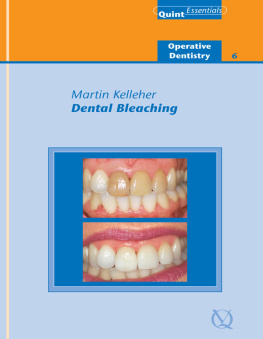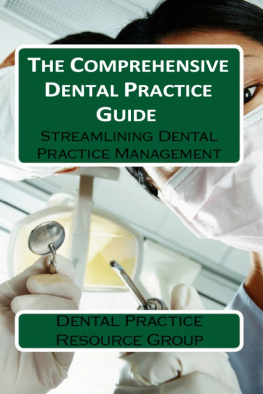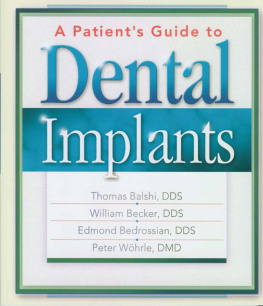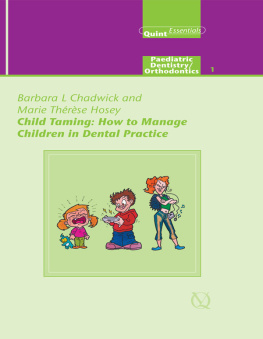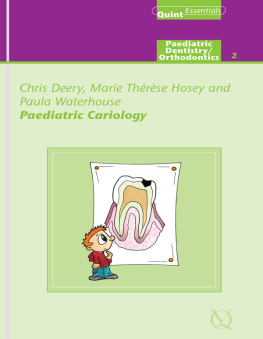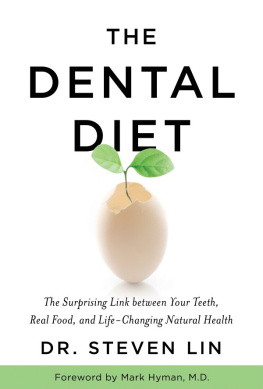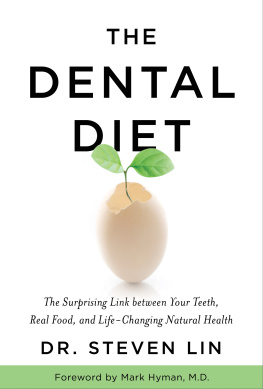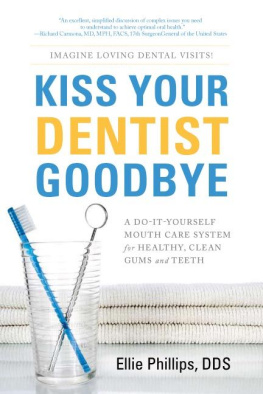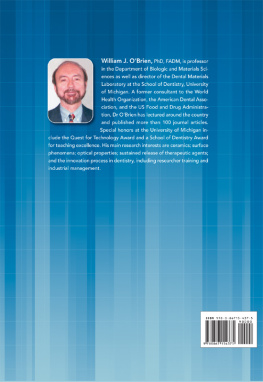Kelleher Martin. - Dental Bleaching
Here you can read online Kelleher Martin. - Dental Bleaching full text of the book (entire story) in english for free. Download pdf and epub, get meaning, cover and reviews about this ebook. genre: Science. Description of the work, (preface) as well as reviews are available. Best literature library LitArk.com created for fans of good reading and offers a wide selection of genres:
Romance novel
Science fiction
Adventure
Detective
Science
History
Home and family
Prose
Art
Politics
Computer
Non-fiction
Religion
Business
Children
Humor
Choose a favorite category and find really read worthwhile books. Enjoy immersion in the world of imagination, feel the emotions of the characters or learn something new for yourself, make an fascinating discovery.
- Book:Dental Bleaching
- Author:
- Genre:
- Rating:4 / 5
- Favourites:Add to favourites
- Your mark:
- 80
- 1
- 2
- 3
- 4
- 5
Dental Bleaching: summary, description and annotation
We offer to read an annotation, description, summary or preface (depends on what the author of the book "Dental Bleaching" wrote himself). If you haven't found the necessary information about the book — write in the comments, we will try to find it.
Nightguard Vital Bleaching
Management of Discoloured Dead Anterior Teeth
Bleaching of Teeth Affected by Specific Conditions
Chair-side Bleaching
Over-the-counter Bleaching Products
Frequently Asked Questions
Information for Patients
Complications and Contraindications
Dental Bleaching — read online for free the complete book (whole text) full work
Below is the text of the book, divided by pages. System saving the place of the last page read, allows you to conveniently read the book "Dental Bleaching" online for free, without having to search again every time where you left off. Put a bookmark, and you can go to the page where you finished reading at any time.
Font size:
Interval:
Bookmark:
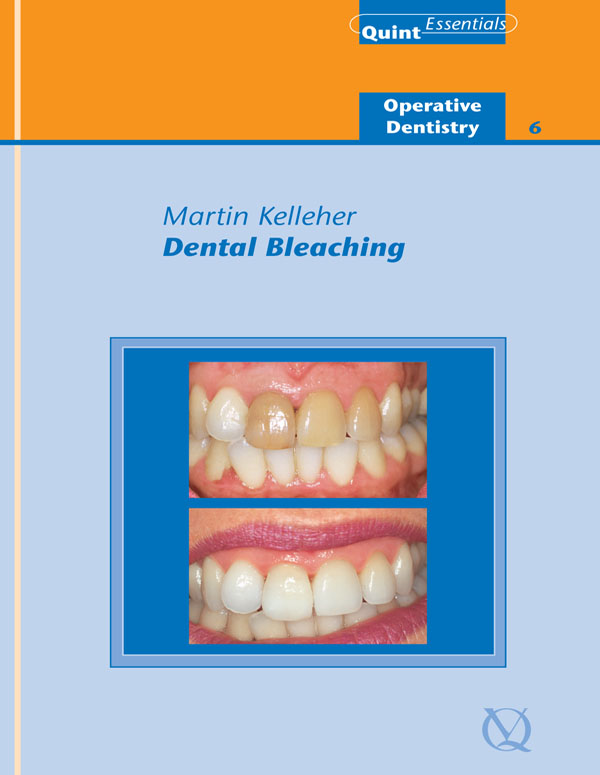
Quintessentials of Dental Practice 38
Operative Dentistry 6
Quintessence Publishing Co. Ltd.
British Library Cataloguing in Publication Data
Kelleher, Martin
Dental bleaching. - (Quintessentials of dental practice; v. 38)
1. Teeth - Bleaching
I. Title II. Wilson, Nairn H. F.
617.634
ISBN: 1850973199
Copyright 2008 Quintessence Publishing Co. Ltd., London
All rights reserved. This book or any part thereof may not be reproduced, stored in a retrieval system, or transmitted inany form or by any means, electronic, mechanical, photocopying, or otherwise, without the written permission of the publisher.
ISBN: 1-85097-319-9
Bleaching, although not new to dentistry, has recently become extremely popular. It has the great advantage of being minimallyinterventive and, assuming correct use, safe. In addition, the appropriate application of bleaching agents and techniquesdoes not adversely affect the integrity or properties of sound tooth tissues.
As emphasised in this most attractive addition to the multidisciplinary Quintessentials series, practitioners and students must not be lulled into a false sense of complacency by the apparent simplicity and versatilityof most bleaching techniques. Careful diagnosis, informed treatment planning, patient consent and cooperation and effectivetroubleshooting are all critical to predictable success and good, long-term clinical outcomes. Bleaching is best providedas part of the holistic care of patients seeking, together with other outcomes, an improvement in their dental attractiveness.While long-term outcomes of bleaching can be excellent, monitoring and top-up treatments may be required as part of longitudinal,patient-centred care.
Whatever your views on bleaching and your application of tooth lightening techniques in your clinical practice, this Quintessentials volume will be a great asset. It is succinct, authoritative, beautifully illustrated, affordable and, above all else, ofimmediate practical application and relevance. What more could the busy practitioner or student wish of a book? Pragmatism:well it has that too, and in abundance. For a fraction of the cost of a bleaching treatment, this Quintessentials volume is, in common with all its sibling volumes, quintessential value for money.
Bleaching is firmly established as an element of the modern clinical practice of dentistry, and practitioners and studentsmust understand the mechanisms, application and pitfalls of the relevant techniques. This book meets these needs, and providesan opportunity to be one step closer to satisfying the ever-increasing expectations of patients.
Congratulations to the author on a job well done.
Nairn Wilson
Editor-in-Chief
Bleaching has been scientifically proven to be safe and very effective in altering the colour of teeth. Discoloured teethare up to five times more worrying to patients than crooked teeth.
While bleaching has been used in dentistry for nearly 200 years, the recent impetus for its use came from the seminal workof Haywood and Heymann in 1989.
Diagnosis of the causes of discolouration, assessment of patients expectations and full discussion with patients about theiravailable options are all important aspects of bleaching.
Bleaching is now well established as one of the most important appearance-enhancing aspects of modern, evidence-based clinicalpractice. This book outlines the mechanisms and techniques involved. It also draws attention to some of the pitfalls of dentalbleaching and how many of these can be avoided with a sensible, patient-centred, deductive, pragmatic approach.
Bleaching in combination with composite or porcelain bonding can produce results that compare very favourably with much moredestructive and expensive traditional crown techniques. Unlike bleaching, many of the alternative more destructive techniquesproduce negative biological outcomes at considerably greater expense in terms of tooth tissue, time and money.
Bleaching leaves patients with one of their most important assets good, clean looking, healthy, attractive enamel. Dentistshave sought for years to produce natural looking replacements for enamel. Many of the supposedly miraculous porcelain materialsproduce dismal long-term results. If dentists just had the good sense to leave enamel on the teeth in the first place, therewould be many fewer biological and aesthetic problems with teeth in the longer term.
It is prudent to reflect that less is more in dentistry. The change away from a destructive mechanical approach to a biologicalminimally invasive one is to be welcomed. This could be best described as a change from Meccano to microns with the gradualrealisation that much less damaging dental procedures are worth more to patients than destructive ones. Bleaching in thiscontext, if sensibly applied according to scientifically validated principles, can reasonably be expected to produce goodlong-term results. This confidence is based on multiple, randomised, double blind, controlled trials.
The book also draws attention to some of the highly publicised but less well proven, if not unsubstantiated, claims made inrespect of certain forms and aspects of bleaching.
This book could not have been done without the help of Margaret Buck, who patiently typed all my drafts. My wife Annette providedinvaluable (usually constructive) criticism throughout the project.
My thanks are also due to Nairn Wilson for his skilful editorial assistance.
Martin Kelleher
The aims are to introduce the chemistry of bleaching, to describe how teeth become discoloured and to demonstrate the safetyof bleaching techniques.
On reading this chapter the practitioner will be more familiar with the chemistry of bleaching discoloured teeth and be reassuredas to the safety of dental bleaching.
Bleaching is a chemical process involving the oxidation of organic material which is broken down to produce less complex molecules.Most of these smaller molecules are lighter in colour than the original larger molecules. Figs 1-1 and 1-2 show teeth beforeand after bleaching.
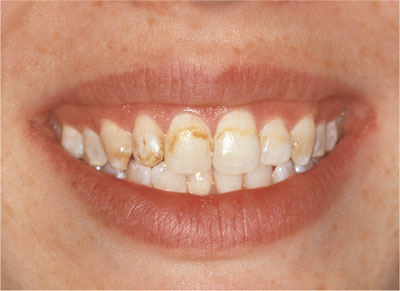
Fig 1-1 Before bleaching.

Fig 1-2 After bleaching.
The oxidation/reduction reaction which takes place with bleaching is known as a redox reaction. In a redox reaction hydrogen peroxide the oxidising agent releases free radicals with unpaired electrons, thereby becomingreduced. The discoloured molecules within the teeth accept the unpaired electrons and become oxidised, with a reduction inthe discolouration.
Hydrogen peroxide is an oxidising agent which produces free radicals HO2 and O which are very reactive. The perhydroxyl ion HO2 is the stronger and more reactive of the two free radicals. For HO2 to be made readily available the bleaching material needs to be alkaline. The optimal pH for HO2 release is around pH 10.
Next pageFont size:
Interval:
Bookmark:
Similar books «Dental Bleaching»
Look at similar books to Dental Bleaching. We have selected literature similar in name and meaning in the hope of providing readers with more options to find new, interesting, not yet read works.
Discussion, reviews of the book Dental Bleaching and just readers' own opinions. Leave your comments, write what you think about the work, its meaning or the main characters. Specify what exactly you liked and what you didn't like, and why you think so.

